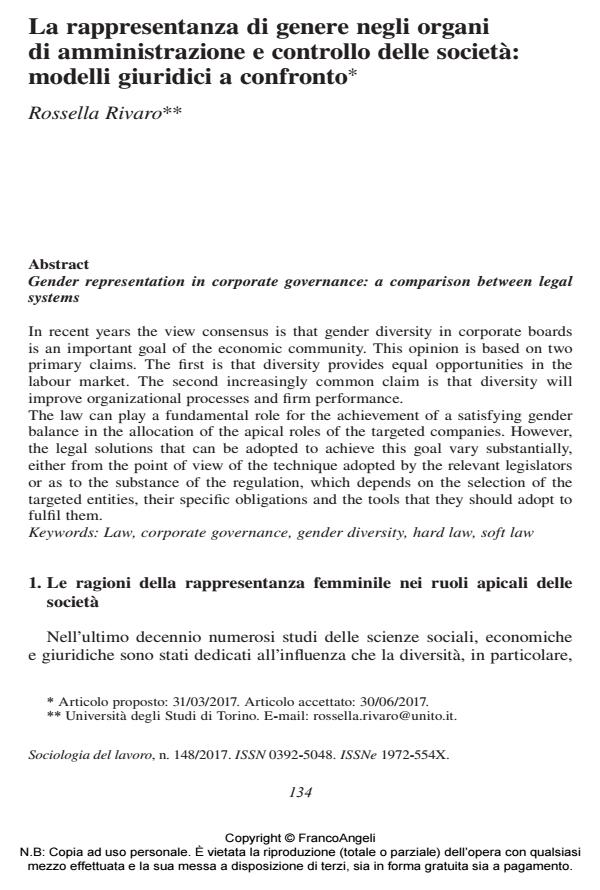La rappresentanza di genere negli organi di amministrazione e controllo delle società: modelli giuridici a confronto
Titolo Rivista SOCIOLOGIA DEL LAVORO
Autori/Curatori Rossella Rivaro
Anno di pubblicazione 2017 Fascicolo 2017/148
Lingua Italiano Numero pagine 16 P. 134-149 Dimensione file 115 KB
DOI 10.3280/SL2017-148008
Il DOI è il codice a barre della proprietà intellettuale: per saperne di più
clicca qui
Qui sotto puoi vedere in anteprima la prima pagina di questo articolo.
Se questo articolo ti interessa, lo puoi acquistare (e scaricare in formato pdf) seguendo le facili indicazioni per acquistare il download credit. Acquista Download Credits per scaricare questo Articolo in formato PDF

FrancoAngeli è membro della Publishers International Linking Association, Inc (PILA)associazione indipendente e non profit per facilitare (attraverso i servizi tecnologici implementati da CrossRef.org) l’accesso degli studiosi ai contenuti digitali nelle pubblicazioni professionali e scientifiche
È opinione largamente condivisa che una composizione diversificata dell’organo amministrativo delle società sia un importante obiettivo della moderna comunità economica. Non solo perché la partecipazione delle donne negli organi sociali rap-presenta un’ulteriore e avanzata affermazione del principio, di matrice etico-egualitaria, della parità tra i generi nel mercato del lavoro. Alla diversità di genere si guarda sempre più anche come a uno strumento utile per migliorare i processi decisionali e i risultati dell’impresa. La regolamentazione può giocare un ruolo centrale per il raggiungimento di un equilibrio di genere nei ruoli apicali delle società. Le soluzioni accolte sono però molto diverse tra loro: sotto il profilo della tecnica di regolamentazione, dei soggetti destinatari delle previsioni normative, degli obiettivi prefissati nonché dei mezzi impiegati per consentirne il raggiungimento.
Parole chiave:Legge, corporate governance; diversità di genere; hard law; soft law
- Board evaluation process in Italy: How far is it from the UK standard? Maria Gaia Soana, Giuseppe Crisci, in Corporate Board role duties and composition /2017 pp.6
DOI: 10.22495/cbv13i3art1 - Gender diversity in the workplaces: Regulatory framework, public policies, and a possible future scenario Giuseppe Calabrese, Rosario Bianco, Elaheh Anjomrouz, in Corporate Governance and Organizational Behavior Review /2023 pp.27
DOI: 10.22495/cgobrv7i3p3
Rossella Rivaro, La rappresentanza di genere negli organi di amministrazione e controllo delle società: modelli giuridici a confronto in "SOCIOLOGIA DEL LAVORO " 148/2017, pp 134-149, DOI: 10.3280/SL2017-148008